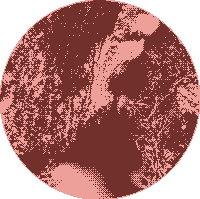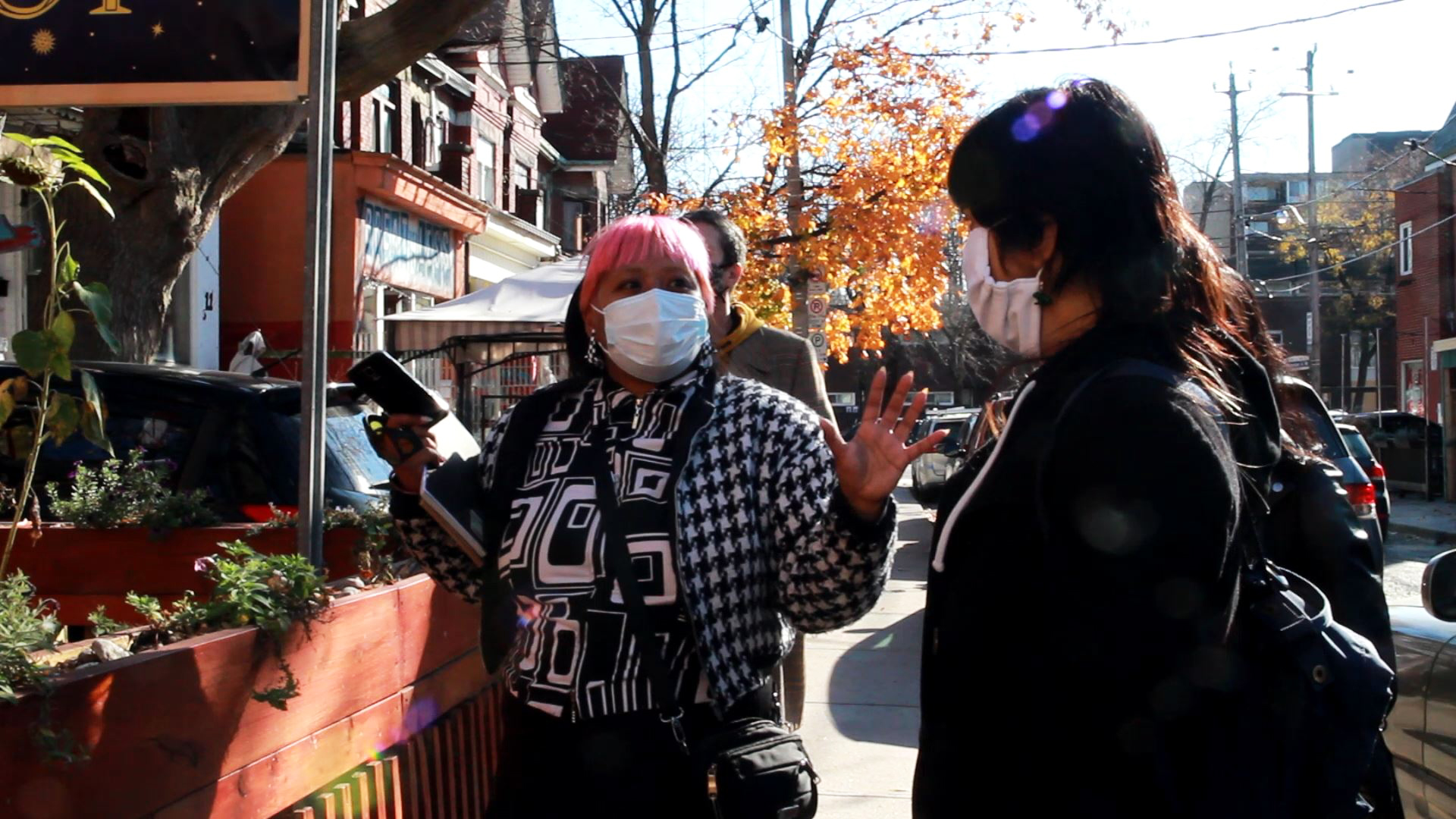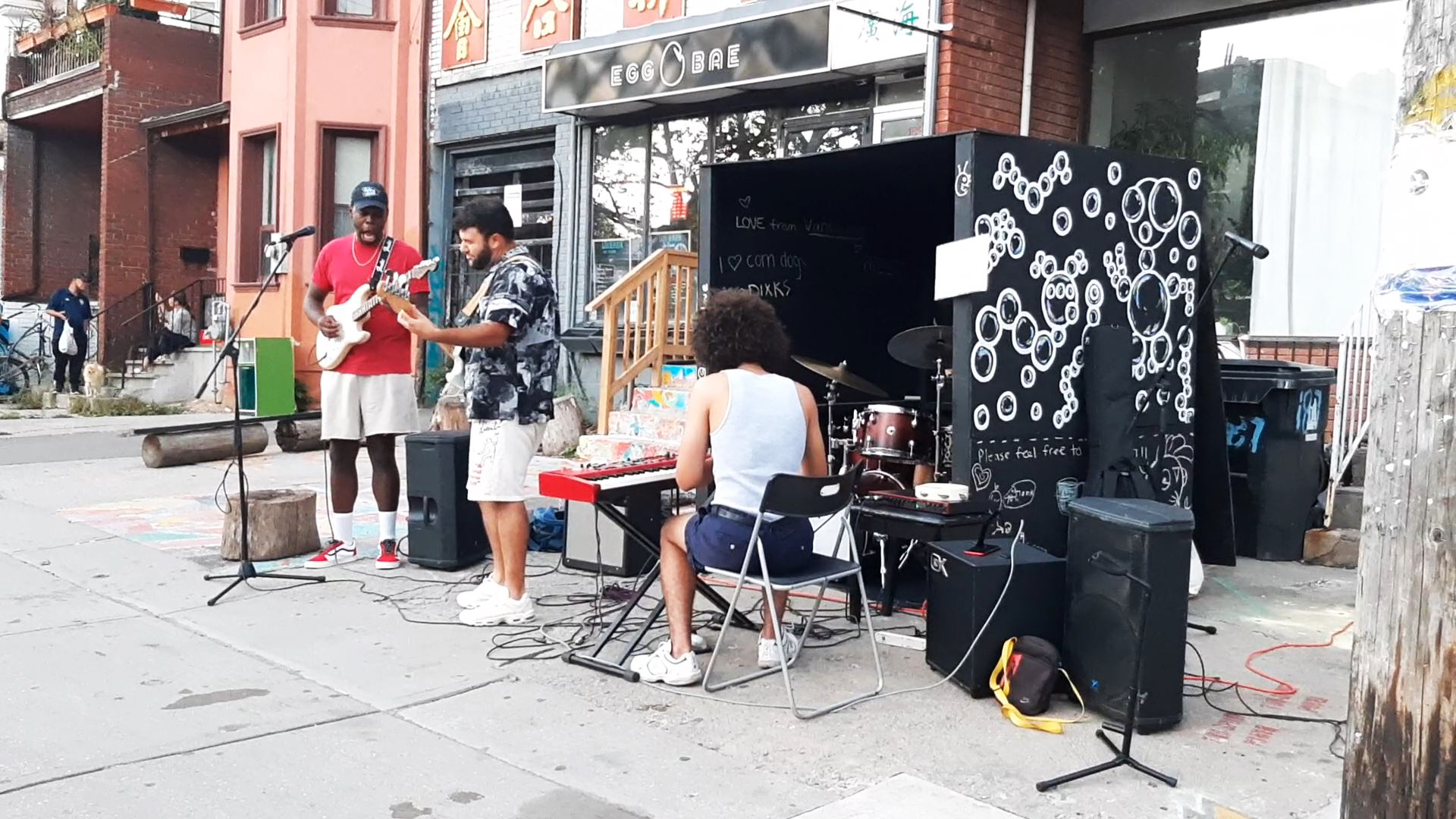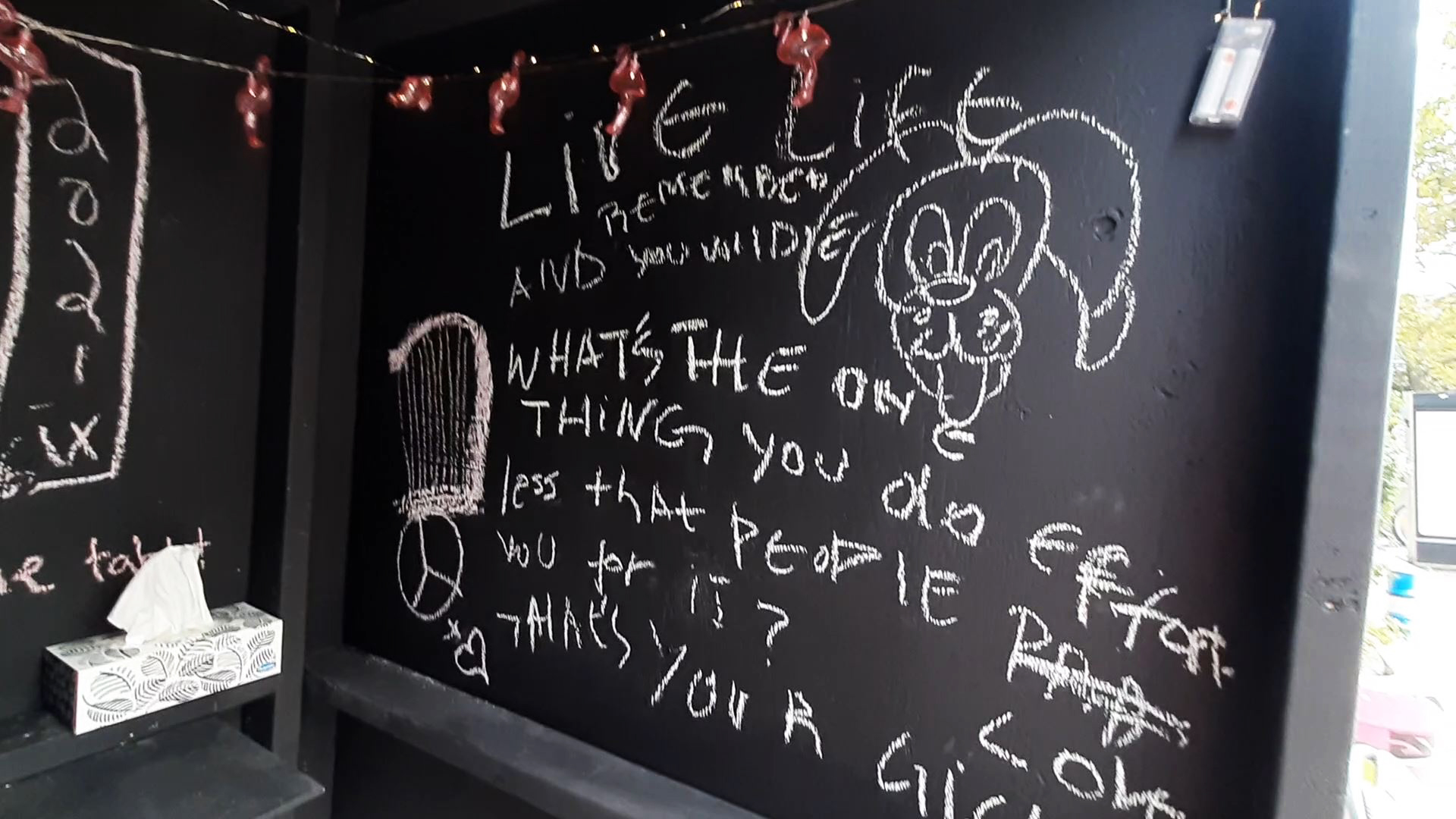Entangled
Overview
Entangled (2020 – 2021) supported three artists and art collectives living and/or working in the Kensington Market community of Toronto to develop and deliver public art installations that invited community members and visitors to share their worries and to imagine beautiful futures for their home. With support from the Kensington Market Business Improvement Area and the Toronto Arts Council, these projects captured stories at risk of being lost at a volatile moment and galvanized thinking and activity about what comes next.
Who imagines the future of our neighbourhoods? There’s a lot of discussion about the design (and redesign) of our cities. Those wanting to build the future talk about data collection, efficient infrastructure, and digital connection. Those wanting to live in that future are concerned about COVID-19, climate change, inequality, and surveillance.
Communities like Kensington Market are not immune from pressures to change. UKAI believes that artists and other creators should play a central role in figuring out what we want our communities to be and providing examples of what a beautiful life could look like.
What kind of data do artists create? What kinds of futures can they imagine?
Sidewalk Labs was just one of many efforts to optimize our neighbourhoods and turn over control of where we live to tech giants and real estate developers.
Entangled was a residency exploring the role of the arts in offering another path for those concerned about the spirit of where we live. UKAI worked with SUMO Project and Kensington community artists to explore and animate conversations about a selected urban planning question. Rather than asking creators to respond to an issue, we prepared them to use their artistic practice as a way of both a) driving public participation and b) capturing feedback so that it might inform future choices made in the Market. We sought out creative and human ways to start and capture conversations.
Turning urban development over to multinational corporations like Google is just one option. We believed that by engaging artists directly in urban development, documenting the process, and creating a framework for other arts-driven approaches to community renewal, other communities can adopt approaches that are organic and derived from artistic ways of knowing.
We believe that art is necessary to describe desired futures as aesthetically constituted wholes, and that community members are critical in the creation of these narratives. Artists must play a role in creating frameworks for issues like dignified housing, regeneration, urban image, and poverty, climate change mitigation, and other critical issues. This project centered artistic practices in deploying an urban development strategy.
The project began prior to COVID-19 and unsurprisingly, COVID-19 offered significant challenges. Despite this, we successfully shifted to an online-offline blended delivery and managed to offer a showcase event that was fully subscribed (70 registrations with 45 virtual attendees) through an online platform. The original plan was to work with the City of Toronto and the Kensington Market BIA to deliver 3 site-specific interventions to test elements of the Kensington Market Master Plan. COVID led to the shut down of many retailers and businesses in the Market and the inability to support in-person artistic interventions. After a pause to restructure and conversation with the BIA, we offered three commissions to artists and arts collectives based in Kensington Market to engage the community in conversation about the future of the Market and the direction of urban development they were experiencing.
Each project integrated a virtual modality (augmented reality, peer to peer direct conversation, and digital projection/mural/soundscape). The current state of two of these projects can be found here, here and here.
Following our virtual showcase, we were contacted by the Jane’s Walk Festival and brought our community partner (187 Augusta), participating artists and UKAI together to discuss the project and the outcomes therein. The original scope of this project was intended to be bigger, but COVID limited the BIA and City’s ability to invest in interventions that encouraged face to face interactions.
For UKAI Projects, we were able to support mutually reinforcing artistic projects that explored the role of artists in generating evidence in support of community development efforts. Moreover, the digital nature of these interventions allowed for us to see how interactions centered in care led to different forms of ‘data’ for use in development conversations. The artists were documenting, in real time, the changes occurring in their home and making them available to others to reflect on how we imagine the future of our neighbourhoods.
We also were able to bring in a documentary filmmaker from Malvern to explore how community challenges and creative responses are tangled up together. For Kensington Market, the project offered opportunities to share stories of changes underway in the Market and to draw attention to the changes happening that might not be visible due to the ubiquity of coverage of COVID and its impacts.
Many stores have closed as a result of COVID, and the projects captured stories of this multi-generational inhabitants of the Market in a period of transition and encouraged others to add their voice to the story of the Market. More broadly, the project offered evidence that including artists in community development is more than a nice addition, but rather generates substantively different evidence to inform decision making than that generated by those adopting a distanced, outside view.




